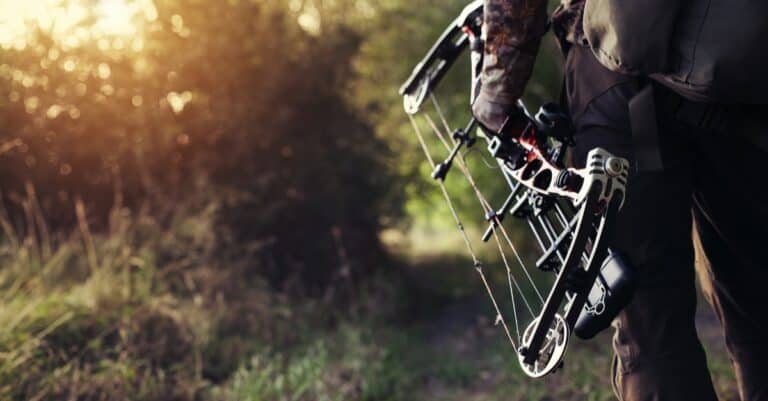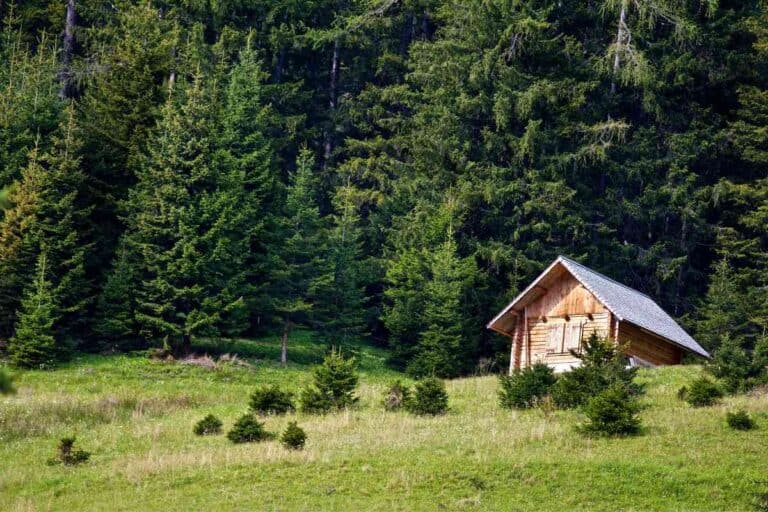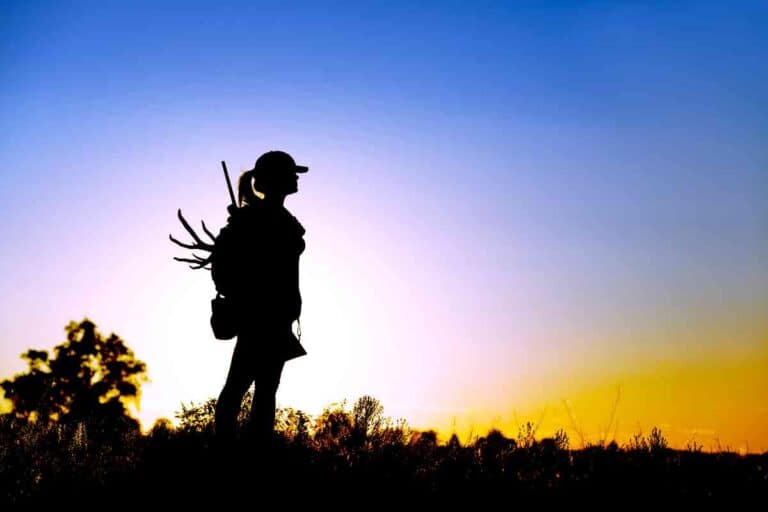Elk Compared to Moose: A Detailed Comparison
Moose and elk are often misidentified by new hunters. Although they belong to the same family and have some similarities, each animal has key characteristics that differentiate it.
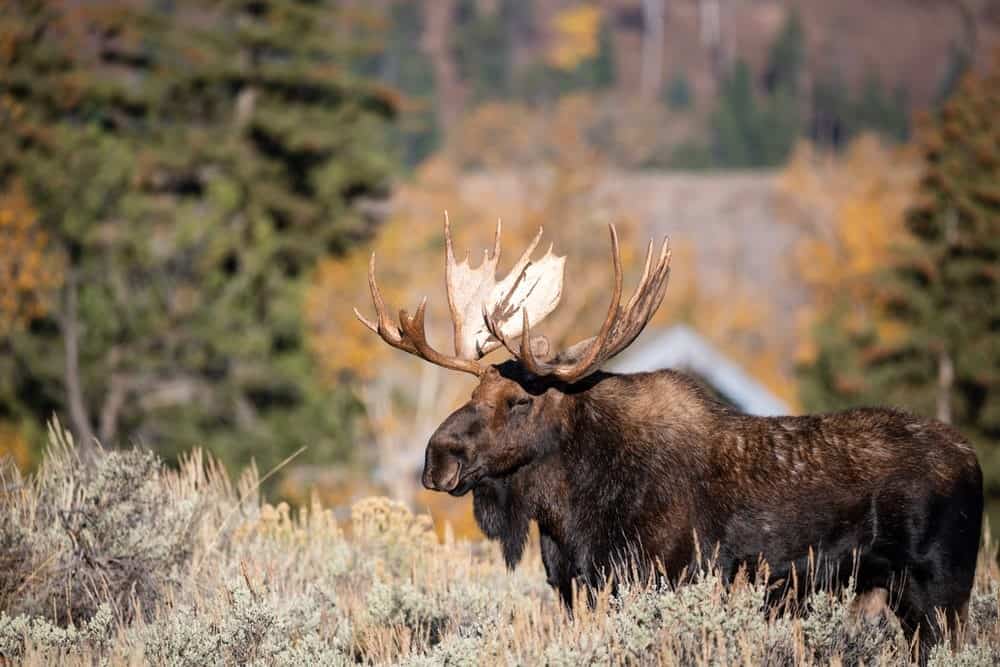
By the way, you may find my guide to investing in hunting land useful, too.
What’s the difference between an elk and a moose?
Elk and moose, both members of the deer family, exhibit distinct differences. Elk are generally smaller with a light brown to pale yellow coat and thin, pointed antlers. In contrast, moose are larger, have a dark brown or black coat, a distinctive skin flap called a dewlap, and broad, flat antlers.
Physically, they differ in their size, color, and the appearance of their throat, antlers, hooves, and nose. They also differ in their social structure and habitat.
In this article, we dive into the differences and similarities between elk and moose.
Elk vs Moose Comparison
| Attribute | Elk | Moose |
|---|---|---|
| Taxonomy | Cervus elaphus canadensis | Alces alces |
| Subfamily | Cervinae | Capreolinae (New World deer) |
| Geographical Distribution | Western North America, East and Central Asia | Across North America |
| Preferred Habitat | Forests, foothills, meadows, Rockies, park areas | Areas with aquatic vegetation, around lakes & rivers |
| Social Structure | Herd animals | Solitary (but sometimes in small groups or pairs) |
| Lifespan | 10-13 years | 15-25 years |
| Size | 450-850 lbs (bull), 4-5 ft tall | 800-1550 lbs (bull), 6-7 ft tall |
| Color | Light brown to pale yellow | Dark brown or black |
| Throat | No dewlap | Dewlap (flap of skin) |
| Antlers | Thin, pointed, up to 4 ft high; shed in early spring | Broad, flat beams with tines; shed in winter |
| Nose | Slender and pointed | Rounded, large muzzle |
| Hooves | Blunted tips (due to migration) | Pointed, heart-shaped |
| Feeding Patterns | Grazers; eat weeds, grasses, shrubs, tips, branches, barks | Browsers; eat aspen twigs, willow, birch |
| Domestication | Commonly domesticated | Illegal to domesticate in most parts of the US |
| Behavior | Frantic when approached, run fast (40-60mph) | Calm even at close range, slower (35-45mph) |
| Meat | Tender, balanced earthy taste; can substitute in beef recipes | Gamey |
| Hunting Regulations | Varies by state (concerning seasons, hours, equipment, techniques, limits, licenses, etc.) | Varies by state (similarly) |
| Tracks | Tooth-shaped, narrower and shallower (around 3 in wide and 4 in long) | Heart-shaped, deeper and wider |
Taxonomy
Both elk and moose are mammals and belong to the deer family – the Cervidae family. However, they are different species.
Elk are categorized as cervinae, while moose are capreolinae. Other members of the cervinae species include muntjac, chital, and tufted deer, while the capreolinae species include reindeer, red deer, and roe deer. The capreolinae species are also referred to as the new world deer.
Elk are scientifically known as Cervus elaphus canadensis, whereas moose are known as alces alces.
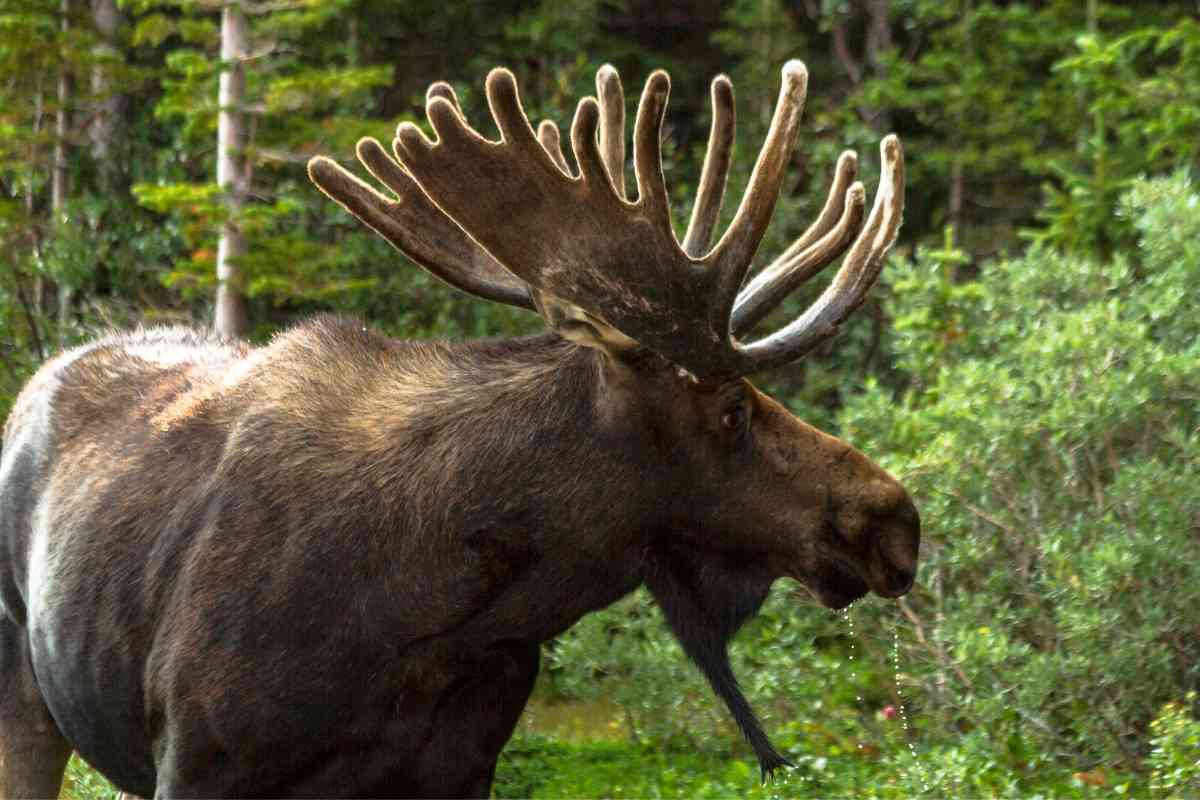
Geographical Distribution and Habitat
Elk are mostly found in Western North America and East and Central Asia. In the US, they are prominent in the following states: Nevada, Wyoming, Colorado, Washington, Utah, California, Idaho, Montana, New Mexico, and Arizona.
There is also a significant population in other parts of the world, including Mongolia, China, Russia, Argentina, Chile, Australia, New Zealand, and Canada.
Elk like to stay in forests, forest lines, foothills, the Rocky Mountains, park areas, and meadows. In the early winter season, they tend to move towards the lower regions of the mountains and park areas to avoid the extremely low temperatures in elevated areas.
On the other hand, moose are mostly found across North America. They are common in Michigan, Minnesota, the Rocky Mountains, and Wisconsin. However, they are not as widespread as elk and may be more difficult to find.
They like to stay in areas with plenty of aquatic vegetation and willows, such as around lakes and rivers. Therefore, it is unlikely that you will find them on the eastern side of North America, particularly near rocky mountains and rocky mountains. Their territory patterns do not change much throughout the year.

Social Structure
Typically, elk are herd animals and like to stay and move in groups. On the contrary, moose are solitary animals. However, they can be occasionally spotted in small groups in most cases of a cow and her calves or pairs during mating season.
Lifespan
Moose tend to outlive elk. Moose have a lifespan of 15 to 25 years, while elk live 10 to 13 years on average.
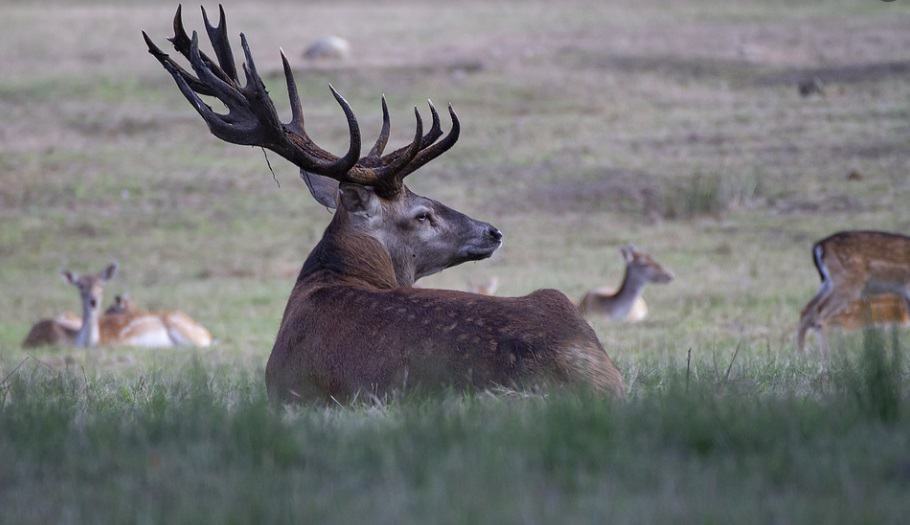
Moose vs Elk Physical Appearance
Size
One of the easiest identifiable differences between moose and elk is their size. Moose are generally heavier and taller than elk. A mature bull moose weighs 800-1550 pounds on average and can grow 6-7 feet tall.
Comparatively, a mature bull elk weighs 450-850 pounds and is 4 to 5 feet tall.
Similarly, a cow moose is much bigger than a cow elk. The females are generally smaller than the males.
Color
Another easily distinguishable physical feature between elk and moose is their skin color. Moose have a darker coat – brown or black, while elk are lighter – their color can range from light brown and golden to a pale yellow.
Throat
Moose have a distinctive large flap of skin that hangs underneath their throat. The flap is known as a dewlap. Conversely, elk do not have any protrusion beneath their through.
Antlers

The antlers of an elk look a lot like those of a deer. They are thin and pointed and can grow up to 4 feet high. Male elk shed their antlers in the early spring season when their testosterone level is low. A new set of antlers begins to grow immediately after the old set has been dropped off.
Moose have larger and more pronounced antlers. They are broad with flat beams. They also have tines on the outer edge. Unlike elk, they shed their antlers during the winter season to conserve energy. New antlers take 3-5 months to grow and become fully formed during spring.
In moose, the symmetry and size of the beams indicate their state of health and age. If they are symmetrical, the animal is in good health. The symmetry also declines as the animal ages after 13 years. The diameter of the beams rather than the height of the tines indicates the moose’s age. The wider the beams, the older the animal.
Nose
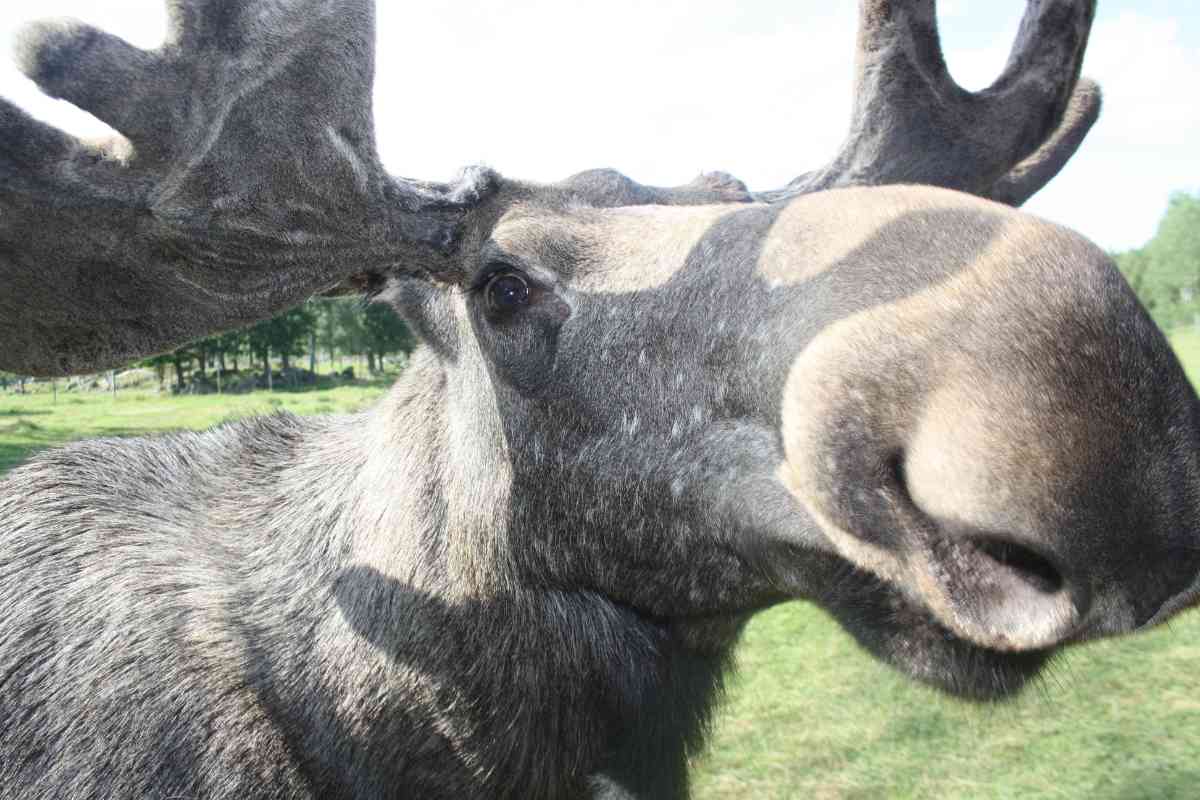
Elk have a typical deer-like nose. It is slender and pointed. On the other hand, moose have a large muzzle and nose. They have fatty pads that make the nose appear rounded.
The rounded muzzle plays a crucial role in enabling moose to swim underwater. The fatty pads close the nostrils preventing water from getting into the animal’s airway. A moose can remain in the water for up to a minute.
They can dive up to 20 feet to reach for aquatic plants at the bottom of the lake. They are also excellent swimmers, which catches some predators by surprise. Moose can swim continuously for up to 10 miles.
Hooves
The tips of elk hooves are usually blunted because the animals migrate more and cover longer distances. Moose, on the other hand, have pointed heart-shaped hooves.
Elk vs Moose Feeding Patterns
Both animals are herbivores. However, moose are browsers and like to eat aspen twigs, willow, and birch.
Elk are grazers and like to roam large areas to pursue weeds and grasses. They are not picky eaters and will eat shrubs, tips, branches, and even barks. They generally prefer clovers, dandelions, aster, grass, hawkweed, and forbs.
Moose vs Elk Domestication
While elk are commonly domesticated and farm-raised, it is against the law in most parts of the US to domesticate moose.
Elk vs Moose Behavior
Elk behave frantically when approached by humans. They tend to flee when they see you, making it more difficult to hunt them. It is most likely an elk if you see a deer-like animal quickly run across the road. They may also make some noise as they get away. Elk are the loudest animals in the deer family.
Meanwhile, moose are rather composed. Even if you are at a close range, they walk away slowly and calmly. This makes them easier to target and hunt down. Generally, both animals are not aggressive.
Elk runs faster than moose at an average speed of 40-60mph, making it challenging to target and hunt them. Moose are slower, with an average speed of 35-45mph, which can be advantageous when targeting and hunting.
Moose vs Elk Meat
Moose meat is fairly gamey, whereas elk meat is tender with a well-balanced earthy taste. As such, elk meat is more palatable and can be used as a substitute in most beef recipes. It is nutrient-dense, low in fat, and high in protein.
Moose vs. Elk Hunting Regulations
Moose and elk hunting is regulated throughout the US. However, the stipulations vary from state to state. The regulations are in regards to:
- Hunting season
- Hunting hours
- Hunting hours
- Firearm and archery equipment
- Hunting techniques
- Bag limit
- Licensing
- Tagging
- Transportation requirements
- Use of the hunted animal
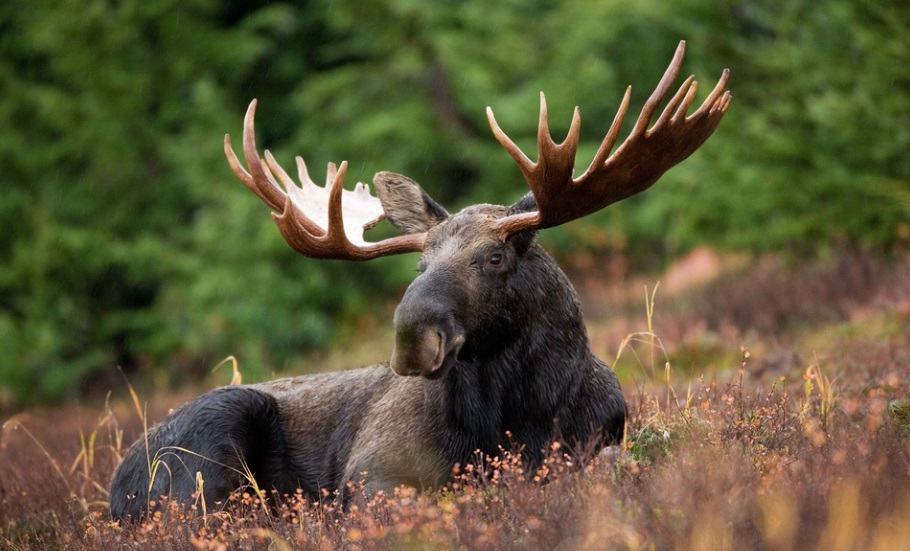
How Can Hunters Easily Identify Moose vs Elk?
Aside from their obvious differences in physical appearance, habitation, social structure, and behaviors, you can easily distinguish the elk from moose by their tracks. Elk have tooth-shaped tracks, while moose have heart-shaped tracks due to the difference in the shape of the hooves, as discussed above.
Elk tracks are narrower and shallower, around three inches wide and four inches long. This is because elk are lighter, so their hooves do not dig too deep into the ground. Therefore, they may not be clear unless on wet or soft ground. They are also slenderer, so the width of the tracks is narrower.
In comparison, moose are heavier, so the extra pounds tend to exert on their hooves, leading to deeper tracks. Since their feet are wider apart, their tracks are consequently wider.
The tracks can also show the number of animals in your hunting zone. Moose are solitary, so you are most likely to identify only a single set of tracks. However, there might be two to four sets of feet during mating season. As for elk, there are likely to be several sets of tracks as they move around in herds.
Conclusion
Moose and elk are not too difficult to tell apart, especially at a close range or with a good pair of opticals. Moose are bigger – they are taller and wider. They are also distinguishable by the dewlap that hangs down from their neck. They are mostly found in rocky mountainous areas and parks.
On the other hand, elk resemble deer closely. They are slender and smaller than moose and have a lighter skin tone. They do not have a dewlap. They are more challenging to hunt as they run faster and behave frantically if they sense your presence.



